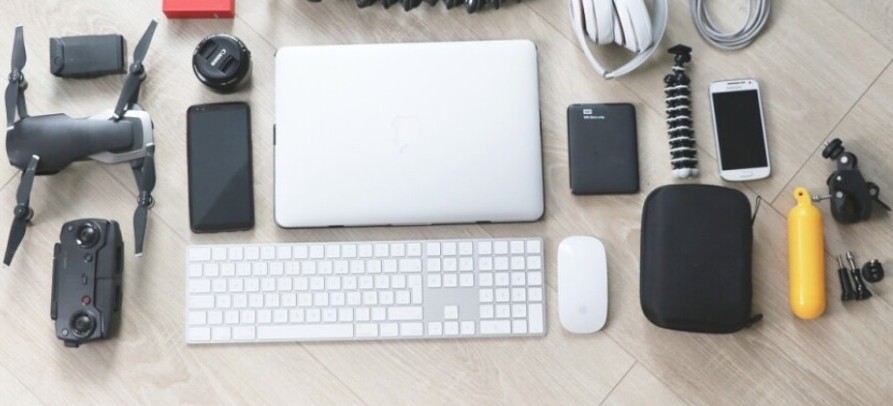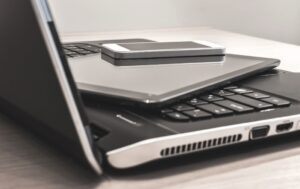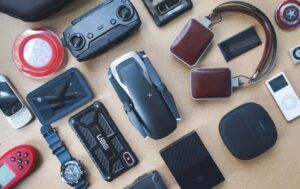 Although many devices have unique maintenance and repair requirements based on their specific technology, the following comprehensive tips apply to most electronics you may encounter in your home. Dust your devices regularly to prevent overheating, update all software and firmware to the latest versions for security and efficiency, and always read the manufacturer’s instructions for any particular maintenance tasks.
Although many devices have unique maintenance and repair requirements based on their specific technology, the following comprehensive tips apply to most electronics you may encounter in your home. Dust your devices regularly to prevent overheating, update all software and firmware to the latest versions for security and efficiency, and always read the manufacturer’s instructions for any particular maintenance tasks.

Also, please don’t expose your electronics to extreme temperatures and moisture, and use surge protectors to protect against power surges. By adhering to these guidelines, you will enhance the performance and extend the lifespan of your electronics.
Maintaining the cleanliness of electronic devices, including washing machines, iPads, and smartphones, is essential for ensuring optimal functionality. Before doing any cleaning procedures, it is best to consult the specific manual for each device to follow any recommendations or precautions.

Generally, most electronics may be effectively cleaned using a soft, dry cloth to eliminate dust, dirt, and fingerprints without risking damage. In cases with more persistent marks, one may consider lightly moistening the cloth with water or an approved cleaning solution, ensuring that moisture does not infiltrate any openings.
Regular cleaning enhances the devices’ aesthetic appeal and significantly contributes to their performance and longevity.
Investing in surge protectors or uninterruptible(UPS) can safeguard electronic devices from potential damage caused by power spikes and outages of power supplies.

These devices act as buffers, absorbing electricity surges and preventing them from reaching sensitive electronic components. Power surges can pose significant risks to the functionality and longevity of your equipment, making such protective measures essential for maintaining its integrity.
Investing in quality surge protection is a prudent approach to mitigating risks associated with electrical fluctuations
Protecting electronic devices from exposure to extreme temperatures, whether hot or cold, is imperative. However, for many household appliances, this is relatively manageable, as they are typically not situated in direct sunlight or exposed to cold drafts.

However, special care must be taken to prevent detrimental temperature exposure to personal electronics such as smartphones, computers, and tablets.
These devices should not be left in vehicles or in un-insulated areas of your home, such as unfinished basements, attics, or garages. Taking these precautions will help preserve the performance and longevity of your devices by minimizing the risk of heat or cold-related damage.
One of the key aspects of maintaining a tidy and efficient electronic workspace is the proper organization of cables. Begin by identifying the various cables running from your devices—these typically include power cords, HDMI cables, USB cables, and more.
To avoid tangles, it’s essential to route these cables neatly along walls, behind furniture, or through designated cable channels. Consider using cable clips to secure cables to walls or furniture surfaces, which helps keep them in place and out of the way.
For further organization, cable ties can be used to bundle multiple cables together, reducing clutter. Velcro ties are particularly useful, as they can be easily adjusted and reused.
If you have long cables that aren’t in use, you can also utilize cable sleeves to encapsulate and protect them while providing a clean look. Additionally, label your cables where possible to make identification easy. This can save you time when unplugging or rearranging devices. By implementing these strategies, you’ll create a safer and more organized environment for your electronics, reducing the risk of damage and improving accessibility.
Maintaining the health and security of your electronic devices is crucial, and one of the most effective ways to achieve this is by staying on top of software updates for both the operating systems and applications you use.
Regular updates provide a range of benefits, including important bug fixes that address glitches or errors which can affect your device’s functionality. Moreover, software updates typically include critical security patches designed to protect your device from newly discovered vulnerabilities and threats.
By ensuring that your system is up to date, you enhance your protection against malware and cyber-attacks, which is particularly important in today’s digital landscape.
Updates can also introduce performance improvements, making your devices run more smoothly and efficiently. This can lead to faster load times, better multitasking capabilities, and an overall enhanced user experience.
To make the process easier, consider enabling automatic updates if your device allows it. This feature ensures that you receive important updates without the need for constant manual checks.
However, it’s still wise to periodically check for updates to ensure that everything is functioning correctly. By prioritizing regular software updates, you can significantly extend the lifespan of your devices and ensure they operate at their best.
Charging your devices correctly is essential for maintaining battery health and ensuring longevity. Always use manufacturer-approved charging cables and adapters.
These items are specifically designed for your device, which helps to prevent any potential damage that might occur from using off-brand or incompatible chargers.
Using approved cables also helps ensure optimal charging efficiency, which can contribute to longer battery life. To further protect your battery, be mindful of overcharging.
Once your device reaches a full charge, unplug it to avoid keeping it connected longer than necessary. Many modern devices have built-in mechanisms to prevent overcharging, but it’s still a good habit to disconnect them once charged.
Additionally, try to avoid letting your devices’ batteries completely deplete before recharging. Lithium-ion batteries, commonly used in smartphones, laptops, and other electronics, perform best when they are kept between 20% and 80% charge.
Regularly charging your devices within this range can help extend their overall battery lifespan. Implementing these safe charging practices can improve your devices’ performance and longevity while minimizing the risk of damage to their batteries, ensuring they remain reliable for everyday use.
Ensuring adequate airflow around your electronic devices is vital for their performance and longevity, particularly for larger appliances, computers, and gaming consoles.
These devices generate heat during operation, and proper ventilation helps dissipate that heat, preventing overheating and potential damage. To facilitate proper airflow, avoid covering ventilation openings on your electronics.
These vents are designed to allow fresh air in and warm air out, so it’s crucially constructed keep them snobs. Additionally, it’s best to avoid placing devices on soft surfaces like beds, couches, or carpets, as these can block airflow and trap heat.
Instead, place your devices on solid, hard surfaces that allow air to circulate freely around them. For desktop computers, ensure enough space around the case to promote ventilation.
Similarly, if you’re using a gaming console, place it on a shelf or stand that allows air to flow around it without any obstructions. Monitoring the temperature of your devices can also be helpful; if they feel excessively hot to the touch, consider repositioning them to improve airflow.
By allowing for proper airflow, you can help maintain a safe operating temperature for your electronics, enhancing their efficiency and extending lifespan.
It’s essential to keep an eye on the performance of your electronic devices. Regularly assess for any signs that they may be underperforming. Look out for issues like:
Suppose applications take longer to load or respond. Regular interruptions can be a sign of underlying problems. Sounds that weren’t there before might indicate hardware issues. Devices getting excessively hot can point to failing components.
If you notice any of these symptoms, consider getting your devices repaired or serviced to ensure they continue to function well.
It’s important to recognize when it’s wiser to seek professional help with your home electronics. As devices become increasingly complex, attempting a DIY repair without the necessary training or tools can pose risks.
It could lead to personal injury, and you might end up causing irreparable damage to your devices. If you need clarification or the problem seems beyond your expertise, reaching out to a qualified technician can save you time, money, and hassle in the long run.
sincerely hope that this article has provided you with valuable insights into the proper care of your electronic gadgets and devices. Should you have any questions or require further assistance, please do not hesitate to leave a comment below. I would be delighted to assist you. Warm regards,
Francisco Rondina Laurito
Founder of https://myelectronicsandaccessories.com or Francisco’s Spectacular Website

